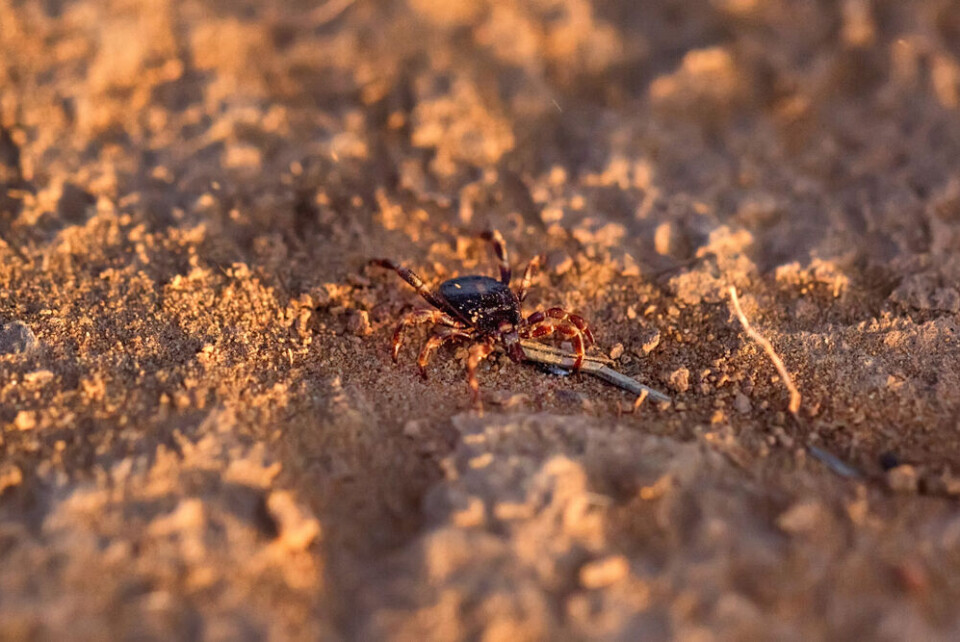-
E-gates updated in France as launch of EES checks approaches
Progress continues towards October start of delayed border checks
-
France’s wild garlic season is here – but foragers should beware toxic lookalikes
Spring brings the fragrant plant to woodlands nationwide. We explain what to look out for
-
Record river levels, more evacuations: Latest on flooding in south-west France
Alerts are in place across five departments and residents in some areas are told to stay home
Ticks carrying Crimean-Congo fever found in France for first time
No human cases have yet been detected but health authorities warn that the virus could spread due to climate change. It is already in Spain

Ticks carrying Crimean-Congo fever have been detected for the first time in France as concern grows about their possible spread.
The virus, full name Crimean-Congo haemorrhagic fever (CCHF) - fièvre hémorragique Crimée-Congo (FHCC) in French - is transmitted by infected Hyalomma ticks. Ticks carrying the virus were detected on cattle in Pyrénées-Orientales in southern France in October.
The presence of the virus has been confirmed by health safety authority Anses (Agence nationale de sécurité sanitaire de l'alimentation, de l'environnement et du travail). There have not been any known human cases in France to date, but the authority has warned that the virus could spread via ticks.
CCHF can cause flu-like symptoms, with added digestive issues (but in some cases is asymptomatic). However, it can be deadly if it leads to fatal haemorrhagic syndrome. In some countries, it has a fatality rate of up to 30-40%, Anses said.
Any cases identified in France must be reported to public health authorities so control measures can be put in place.
How does CCHF spread?
It is spread via the bites of infected Hyalomma ticks. The Hyalomma is large, around twice the size of a ‘standard’ tick. It can be recognised by its striped coloured legs.
The virus can also be spread by contact with the blood or fluids of infected humans or animals.
In contrast, the virus is not transmitted by air or droplets, nor from eating products from an infected animal. Even eating raw dairy products from an infected animal does not transmit the virus, the Pasteur Institute has said.
Is the spread to humans likely?
An emergence in France is possible, the authority said, in a report in May.
Coordinator of the report, Elsa Quillery, warned that the risk of the fever appearing in humans in France is “all the more likely as the geographical extension of the ticks' implantation zone [is] favoured by climate change”.
This is because the ticks prefer drier, hotter weather; and drier scrubland.
Les changements climatiques impliquent l’apparition de nouveaux risques.
L’implantation de tiques Hyalomma, déjà présentes dans le sud de la , rend possible l’apparition de nvelles maladies, comme la fièvre hémorragique de Crimée-Congo.
Il est nécessaire d’anticiper ce risque pic.twitter.com/JufWFfnDu3— Anses (@Anses_fr) June 1, 2023
Anses has advised that the Hyalomma tick is placed under surveillance. There is currently no surveillance system for this kind of tick in France.
It has called for more research into the tick, specifically in a bid to find a vaccine against the virus, said Dr Quillery. No such vaccine yet exists.
However the Hyalomma tick rarely bites humans and has no particular appetite for humans.
Due to its size and preference for drier climates, the tick is also easier to spot and remove, in comparison to other types of smaller ticks that hide in forested, long-grass areas (and spread diseases such as Lyme).
Read more: Lyme disease in France: Official advice on how to avoid a tick bite
Where does CCHF come from?
The virus gets its name from the Crimean peninsula, in the Black Sea in eastern Europe - where it was first identified in 1944. It was then linked to an identical virus from the DR Congo (formerly Zaire), in Central Africa.
It travels mainly via migrating birds, which can bring the Hyalomma tick with them. It has been present on the Mediterranean coast since 2015, earlier in Corsica.
It is also present in Spain, where around a dozen human cases - including some deaths - have been reported since 2013, said Anses.
Related articles
French health experts fear spread of potentially deadly tick
Mediterranean tick expands territory in south of France
Number of people bitten by a tick rising in France
























